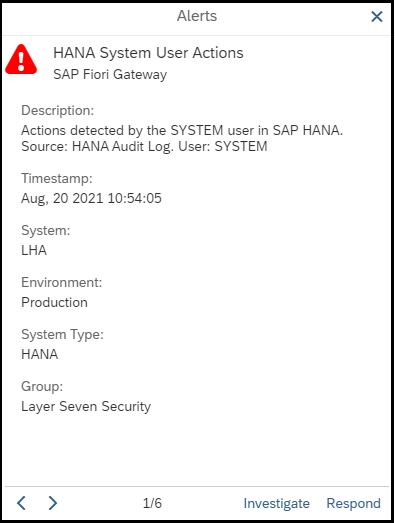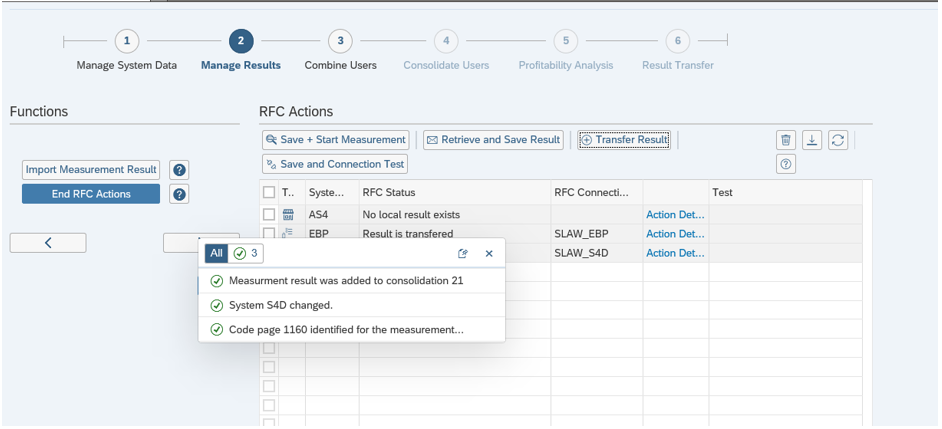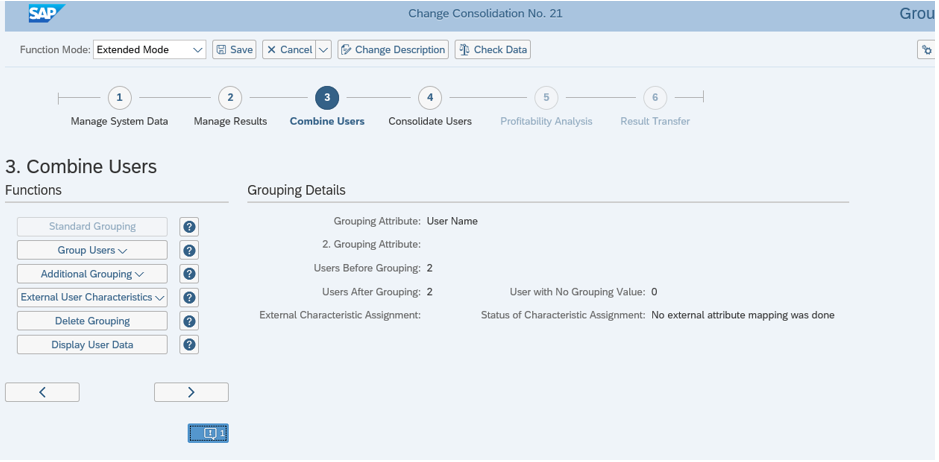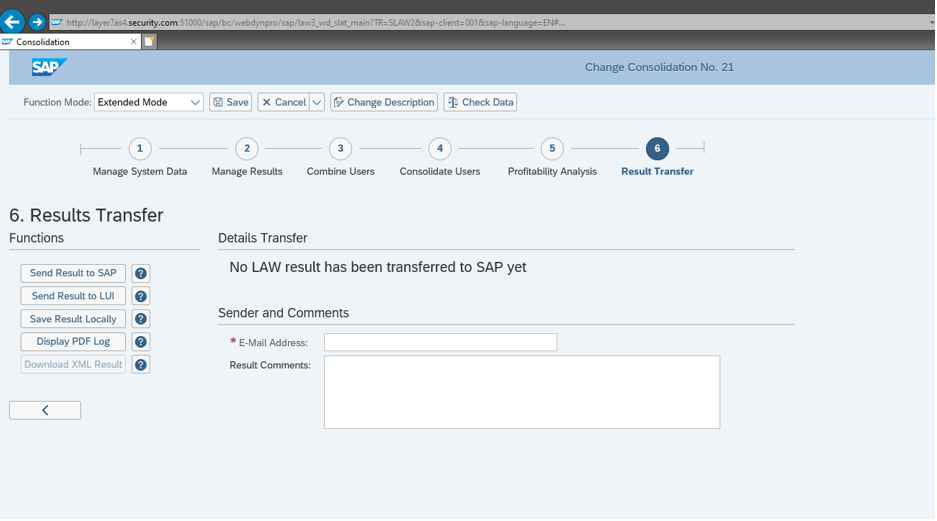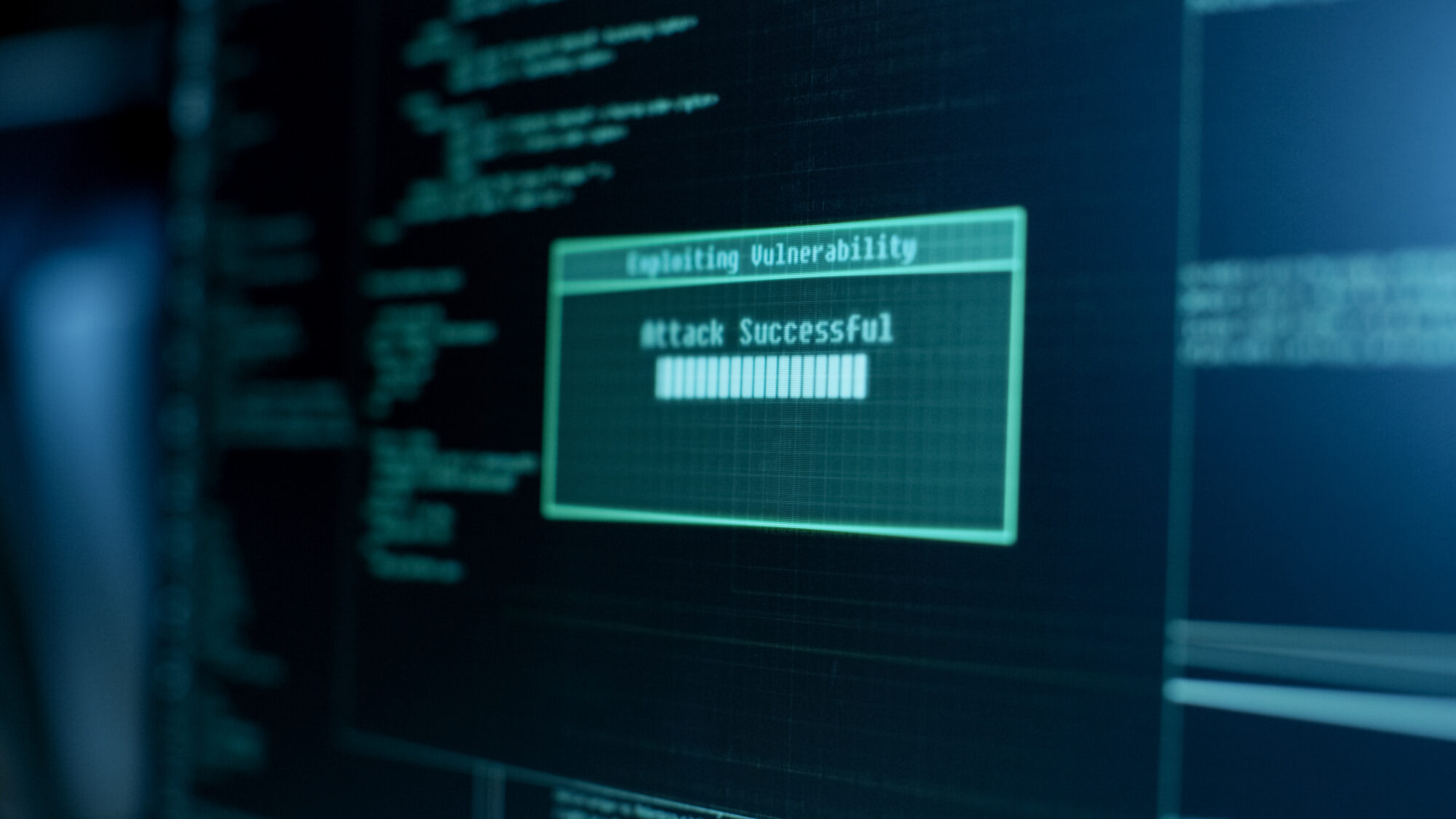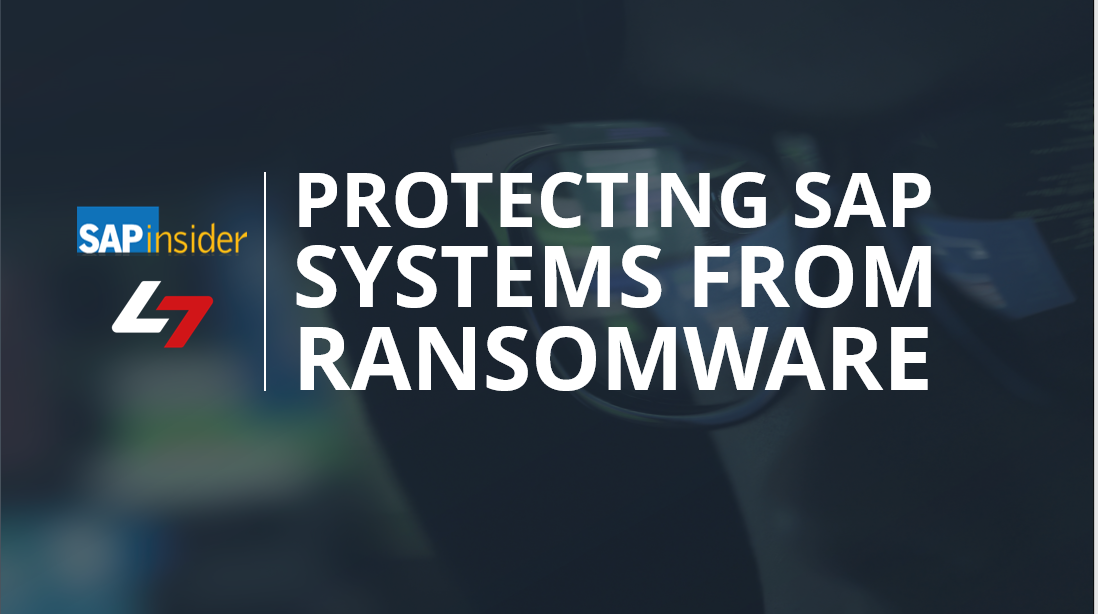Security Monitoring with Focused Insights for SAP Solution Manager
Focused Insights is an advanced dashboard framework that was previously available only for MaxAttention customers as part of the MaxAttention Next Generation Add-On (MANGO) but is now available for all SAP customers. Focused Insights can now be installed in SAP Solution Manager 7.2 without any additional SAP licensing or user and usage restrictions.
Focused Insights for SAP Solution Manager provides ready-to-use templates for monitoring a range of KPIs for SAP landscapes. Customers can select from over 800 best practice KPIs for multiple use cases. The framework is organized in three levels: Operational, Governance and Strategic. Security metrics are monitored primarily in the Tactical Dashboard, accessible from the Focused Insights Launchpad.
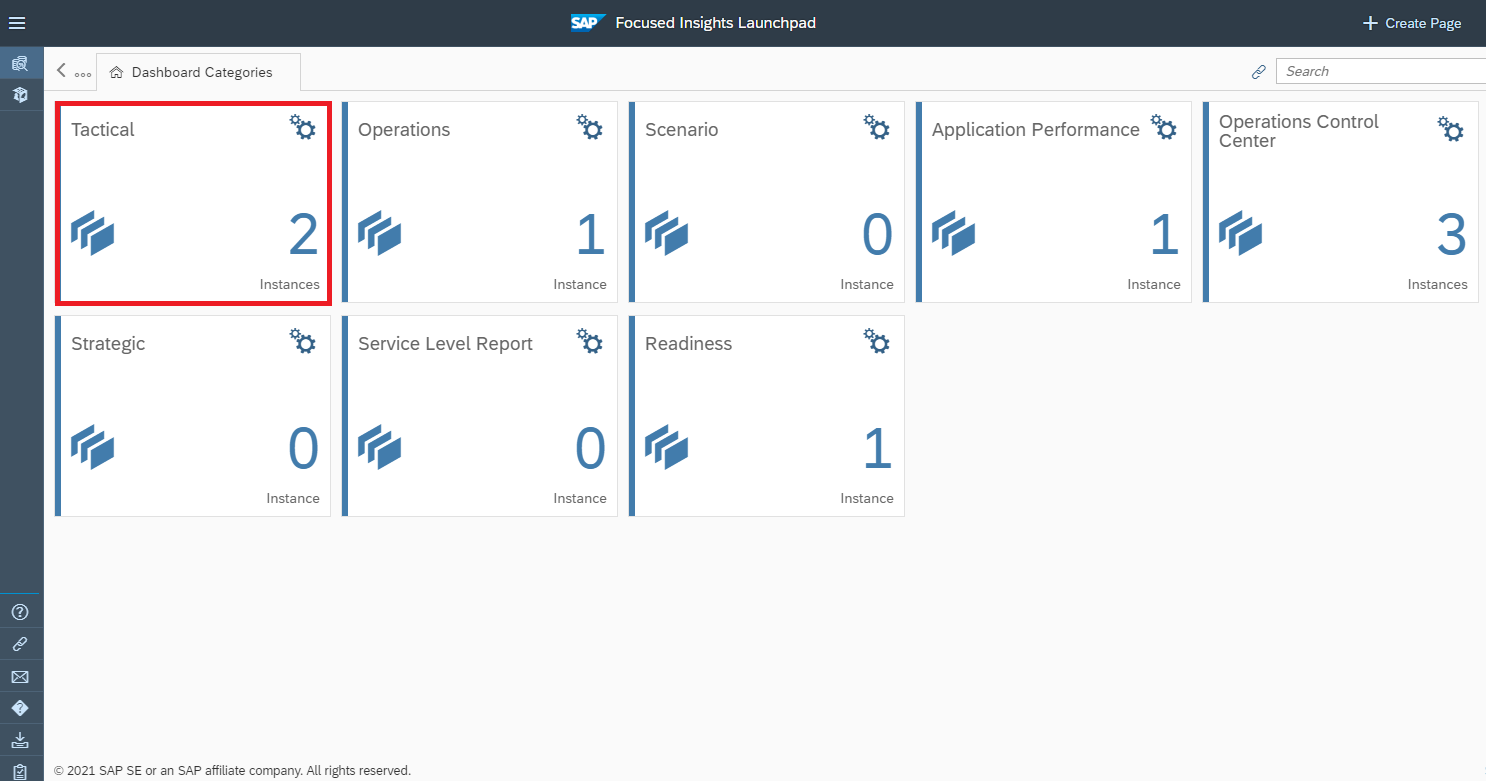
The Tactical Dashboard can monitor several instances. Instances are groups of systems geared for different users or groups. Instances are setup and maintained using the TAC Configuration option. This includes relevant systems, scenarios and thresholds for KPIs.
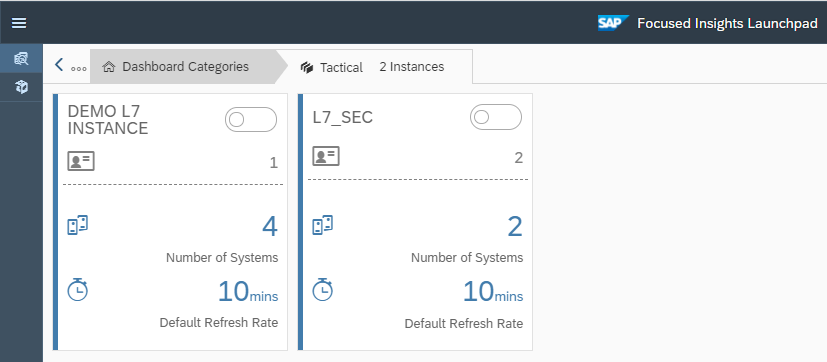
The current version of the dashboard supports eleven scenarios such as Availability, Performance, Operations, and Security. Each scenario is rated green, red or yellow based on the thresholds and options maintained in the configuration.
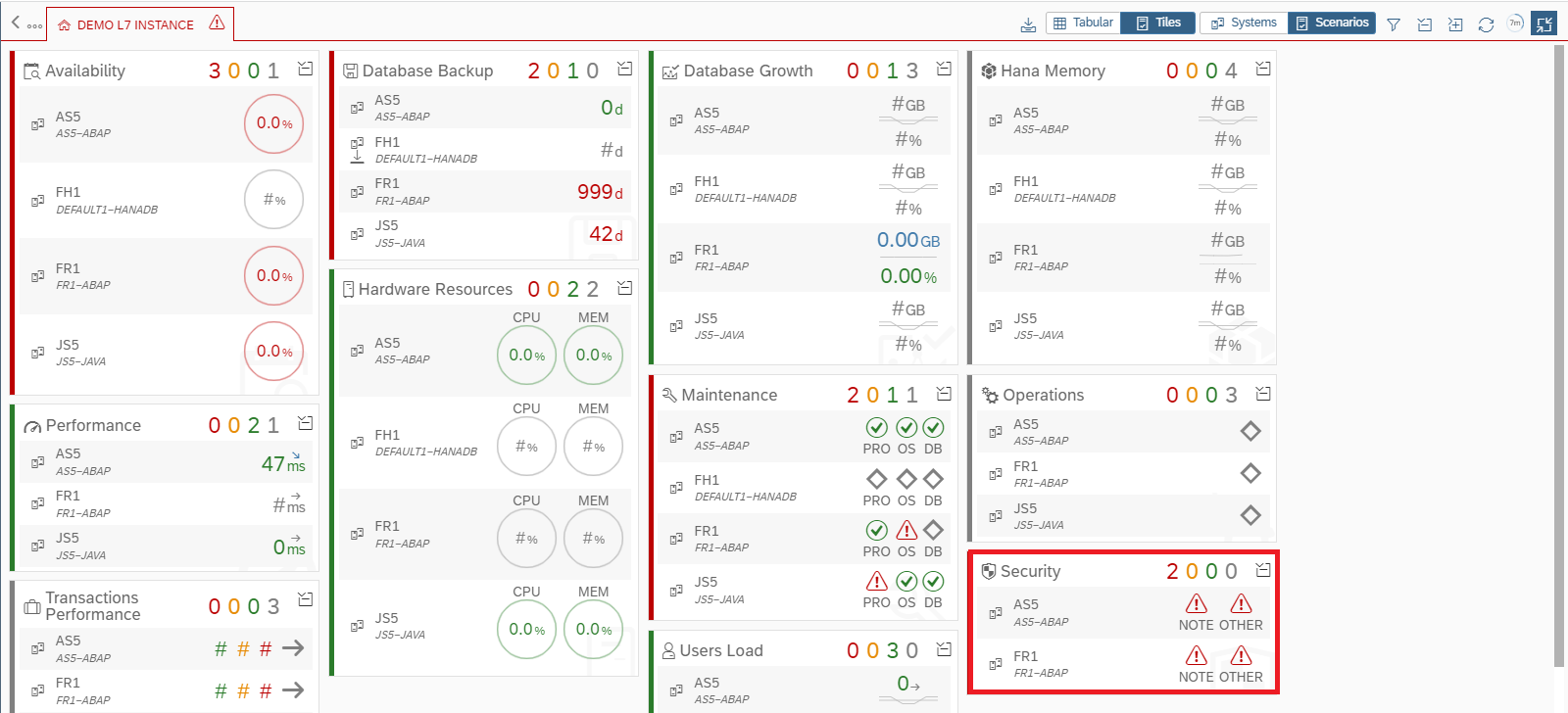
The Dashboard is refreshed automatically every 10 minutes but the frequency can be changed from 5 to 30 minutes and maintained separately for each instance.
The security scenario supports monitoring of security metrics for ABAP, HANA, and Java systems and the SAP Web Dispatcher. It reports the number of very high (hot news) and high rated security notes that are unapplied in each system, users with critical privileges including the SAP_ALL profile, systems that are open for direct changes, insecure client settings, RFC destinations configured with privileged users, and misconfigurations in specific security-relevant profile parameters. Notes information is sourced from System Recommendations in SAP Solution Manager. The results of other security checks are derived from Configuration Validation using target systems supplied by SAP.
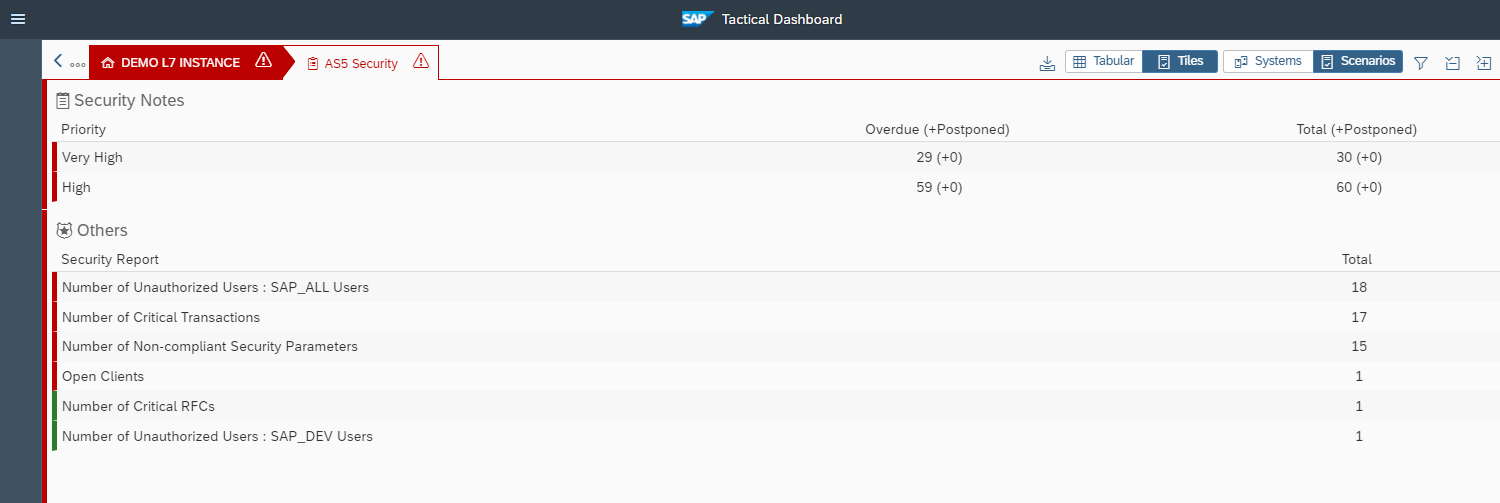
Focused Insights 2.0 SP7 and higher supports the integration of custom target systems with the security scenario in the Tactical Dashboard. This can be used to support monitoring for additional security checks beyond the SAP standard delivery.


